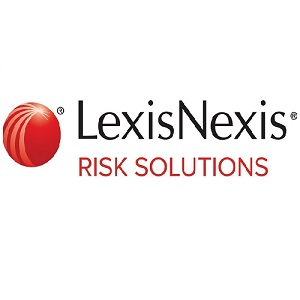LexisNexis Risk Solutions launches vehicle build product to offer U.S. insurers Much-Needed ADAS details for better premium evaluation and pricing segmentation

LexisNexis® Risk Solutions, has announced the availability of LexisNexis® Vehicle Build, a solution that provides U.S. insurance carriers more accurate underwriting and auto insurance risk assessment and comprehensive information about the specific Advanced Driver Assistance Systems (ADAS) features equipped on a vehicle.
Automakers continually develop new ADAS features – sometimes releasing multiple within the same model year – and promote their efficacy in reducing accidents, but these features are often offered as an optional purchase to the car buyers. In addition, each automaker creates its own unique marketing name for its features for the sake of differentiation. This variability in naming similar features, in combination with the difficulty in determining whether those features are actually equipped on a given vehicle, creates a challenge for insurers seeking to properly price the vehicles they underwrite. To address this challenge, LexisNexis Vehicle Build aggregates and normalizes even more specific manufacturing data than what is currently available at the 17-digit VIN number. The solution harnesses the proprietary LexisNexis ADAS Classification System, leverages the company’s expertise in machine learning and advanced analytics, and seamlessly integrates the data into existing workflows, including LexisNexis® Auto Data Prefill.
LexisNexis Risk Solutions analyzed 11 million randomly selected U.S. vehicles within model years 2014-2019, and using proprietary information compared vehicles equipped with a set of core ADAS features against vehicles without those features. LexisNexis found that ADAS equipped vehicles showed a 27% reduction in bodily injury claim frequency and a 19% reduction in property damage frequency, but also found that severity for ADAS-equipped vehicles increased only slightly.
“Vehicle-centric data is becoming more significant to U.S. insurers as cars continue to offer ADAS and other safety-related packages as add-ons to base models. Consumers who select these upgrades to their vehicles have an expectation that this choice will positively impact their insurance premium,” said Tanner Sheehan, Associate Vice President of Auto Insurance, LexisNexis Risk Solutions. “By providing a classification of VIN-level insights with our Vehicle Build product, carriers are able to more easily evaluate the evolving vehicle technology and improve pricing segmentation.”
According to a recent report by the Highway Loss Data Institute (HLDI), the projected number of vehicles equipped on the road by 2023 with front crash prevention will equate to a little more than 30% and approximately 24% for automatic emergency braking (AEB). LexisNexis internal analysis shows 76% of 2019 models had at least one core ADAS feature, which is up significantly compared to 18% in 2014 models. The growing prevalence of ADAS features underscores the importance for carriers to be able to account for features as they price policies. Having these insights is also proving instrumental in evaluating the effectiveness of the latest vehicle safety features in reducing collisions and insurance claims.
As cars continue to evolve with more complicated systems, connected car data will provide additional insights into the efficacy of ADAS-equipped cars, and with it relationships in the automotive OEM space, LexisNexis Risk Solutions is best positioned to leverage such data. This may include data insights into frequency of use, activation and deactivation instances and more. Today, LexisNexis Vehicle Build helps insurers:
- Gain valuable insights into vehicle-centric risk for more precise rating;
- Easily understand the definition and purpose of any given ADAS feature and how it specifically impacts driving safety;
- Save time through the convenience of single-source access and standardized, normalized data, regardless of automaker or model;
- Enhance underwriting and improve the customer experience through more efficient and informed decision-making; and
- Reduce workflow disruption through seamless integration into existing LexisNexis solutions.






One Comment